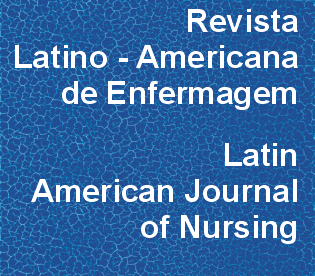Prevalence of Urinary Incontinence in a Random Sample of the Urban Population of Pouso Alegre, Minas Gerais, Brazil
DOI:
https://doi.org/10.1590/S0104-11692010000500010Keywords:
Urinary Incontinence, Epidemiology, NursingAbstract
This study determines and analyzes the prevalence of Urinary Incontinence (UI) and its demographic and clinical predictors. This epidemiological and cross-sectional study was approved by the Research Ethics Committee of the University of São Paulo, Nursing School. The sample was randomly selected by cluster technique and included 519 individuals aged ≥18 years, living in 341 houses in urban areas. Data were analyzed through Chi-Square, Hosmer Lemeshows test and multivariate logistic regression (stepwise). Prevalence rates were standardized by gender and age. Of the 519 people composing the sample: 20.1% had UI, 32.9% were women and 6.2% were men. Longer duration of losses (OR = 29.3; p<0.001), diabetes mellitus (OR = 17.7; p<0.001), stroke (OR = 15.9; p<0.001), and cystocele (OR = 12.5; p <0.001) were the factors most strongly associated with UI. This study enabled the identification of UI epidemiology and can contribute to the development of public policies for its primary and secondary prevention and treatment, even if such measures are initially implemented at the city level.Downloads
Download data is not yet available.
Downloads
Published
2010-10-01
Issue
Section
Original Articles
License
RLAE’s authorship concept is based on the substantial contribution by each of the individuals listed as authors, mainly in terms of conceiving and planning the research project, collecting or analyzing and interpreting data, writing and critical review. Indication of authors’ names under the article title is limited to six. If more, authors are listed on the online submission form under Acknowledgements. The possibility of including more than six authors will only be examined on multicenter studies, considering the explanations presented by the authors.Including names of authors whose contribution does not fit into the above criteria cannot be justified. Those names can be included in the Acknowledgements section.
Authors are fully responsible for the concepts disseminated in their manuscripts, which do not necessarily reflect the editors’ and editorial board’s opinion.
How to Cite
Prevalence of Urinary Incontinence in a Random Sample of the Urban Population of Pouso Alegre, Minas Gerais, Brazil . (2010). Revista Latino-Americana De Enfermagem, 18(5), 903-910. https://doi.org/10.1590/S0104-11692010000500010



